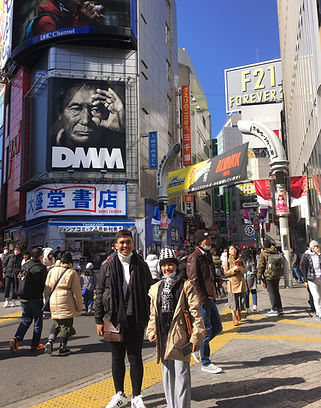
menu


MC KENLY V. CORDERO
--o--
"I will forever keep all my learning experiences in Japan and value them as I continue my teaching journey."


TAKE A LOOK AT OUR WEEKEND TRIPS AND EXCURSION !


EXPLORING THE BEAUTY OF
"LAND OF THE RISING SUN",
JAPAN








Sensoji (浅草寺, Sensōji, also known as Asakusa Kannon Temple) is a Buddhist temple located in Asakusa. It is one of Tokyo's most colorful and popular temples.
https://www.japan-guide.com/e/e3001.html






One of Japan's unofficial landmarks, the Hachiko statue in Shibuya is a homage to the faithful Akita dog who waited at Shibuya Station every day for his master, even after his death. Today, it’s one of the most popular meeting places in Tokyo.
https://en.japantravel.com/tokyo/hachiko-statue-in-shibuya/44644








Kawagoe (川越) is located about 30 minutes by train from central Tokyo and is suitable as a day trip destination. Its main street, lined with Kurazukuri (clay-walled warehouse-styled) buildings, retains an ambience reminiscent of an old town from the Edo Period (1603-1867) and allows us to imagine the streets from past centuries. Thereby, Kawagoe became known as "Little Edo".









The Imperial Palace East Gardens (皇居東御苑, Kōkyo Higashi Gyoen) are a part of the inner palace area and are open to the public. They are the former site of Edo Castle's innermost circles of defense, the honmaru ("main circle") and ninomaru ("secondary circle"). None of the main buildings remain today, but the moats, walls, entrance gates and several guardhouses still exist.
https://www.japan-guide.com/e/e3018.html#section_main_content





Mount Tsukuba is a gorgeous double peaked mountain in the Ibaraki Prefecture. At only 877 meters tall, Tsukuba-san is a much easier, relaxing, and less crowded alternative to the ever popular Mt. Fuji. On a clear day, you can see a panoramic view of the entire Kanto plain, the skyline of Tokyo, and Mt. Fuji. On a cloudy day, you can still get a pretty killer view of the surrounding nature.
https://tokyocheapo.com/entertainment/mount-tsukuba-great-day-trips-outside-of-tokyo/



Every year, from February 4 to March 3, the town of Makabe, in Ibaraki Prefecture, holds a fantastic Hina Doll Festival. Many gorgeous, and often antique, hina dolls are on exhibit. The residents of this town also use their creative minds to design 'original' hina-related displays which are often even more impressive than the originals.
https://en.japantravel.com/ibaraki/makabe-hina-doll-festival-displays-ibaraki/19268



Ranked among Japan's three finest landscape gardens, Kairakuen (偕楽園) is most famous for its over three thousand plum trees. The garden is located in Mito, the capital of Ibaraki Prefecture.




A variety of materials relating to the history of Ibaraki are collected in the Ibaraki Prefectural Museum of History and used by many people. In addition to the main building, the large museum grounds (72,000 m²/17.8 acres) are home to reconstructed Edo-era agricultural buildings, a Meiji-era western-style school building, and more. Also, the grounds are blessed by flowers and other greenery, which change with the seasons.
https://www.pref.ibaraki.jp/bugai/kokusai/tabunka/en/travel/lib-01.html
